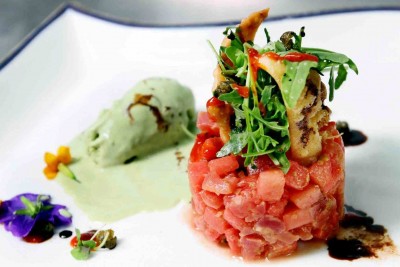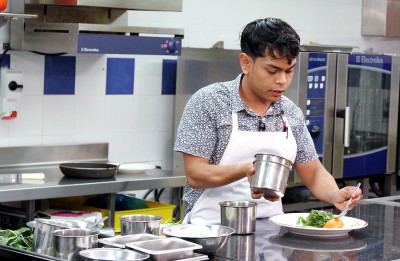By NURILKARIM RAZHA
alltherage@thestar.com.my
GROWING up in a house where nature always seemed to be plotting an elaborate reclamation project, I found myself battling troops of macaques, monitor lizards, and squirrels, and taming an overgrown garden as part and parcel of everyday life.
Feeling house proud, I would spend a good part of my day defending the rambutans and mangoes my anthropologist parents had planted, hoping to be self-sufficient but unknowingly spurring animosity between a small boy and the wild. My parents saw my enthusiasm as a good reason not to shower me with plastic toys and Hot Wheels, allowing my love for nature to blossom.
Witnessing my mother’s displeasure when the bold fauna of Penang chomped down on her hibiscus hedge and buttercups made me realise what was ornamental to some was also sustenance for others.
Learning from the pros, I would pluck flowers and leaves, pound them with a pestle and mortar and present it at the family table as “sambal”.
Although some of mum’s friends thought I was trying to poison them, I realised the possibilities of what you could concoct with a batu tumbuk were endless.
The experience I got from the garden helped me sail through my culinary arts diploma and hotel management degree, and bag two medals from international cooking competitions.
Having almost two decades of experience, first in masak-masak, then working in a hotel and fine dining restaurant and now my own baby, the Jawi House in George Town, I thought sharing the many uses and variations of sambal in my new column (which I won thanks to the R.AGE Food Fight competition) would be just the thing!

As a child, Nurilkarim Razha used to make ‘sambal’ from leaves and flowers. Thankfully, things have changed since then.
That Malaysians love sambal is an understatement – we start our days with a sweet one in a packet of nasi lemak and end the nights enjoying a round of ulam with its pungent, fiery paste.
First lesson on cooking: resist the impulse of using a blender as you would be forced to add an unnecessary amount of liquid. If you don’t want to pound the sambal, you can use a food processor.
I personally start with an abrasive sugar or salt and about five large chilies with a piece of belachan the size of a school eraser (you know, the ones with the country flags) and tamarind paste or lime juice. The final texture is up to you. You can make something finer to eat alongside fried rice or a rough paste to use in stir fries.
The versatility of sambal belacan is unrivaled by any other Malaysian condiment. For example, you could:
1 Add some finely sliced cekur leaves for a more Nyonya flavour.
2 Mash in some mango to make sambal machang, a must-have when eating grilled fare.
3 Freeze in small batches and use it to flavour stir-fries.
4 Use it as a flavour base when making local salad or kerabu
5 Add a few spoons into fish stock and make a simple pindang dish or even laksa.
6 Marinade chicken chunks and coat with some egg and corn starch to make your own secret fried chicken dish.
7 Add a dash to spaghettini with wilted arugula and shave some Grana Padano over it.
Food should always be celebrated for the joy it brings us and not for the monetary value humans have placed on it, and sambal is one of the many humble treats Malaysians cannot live without.
Nurilkarim Razha is the winner of the 2015 R.AGE Food Fight competition, and the manager of the Jawi House Cafe Gallery in George Town. Watch out for his up-coming food show on rage.com.my and TheStarTV.com!














Tell us what you think!